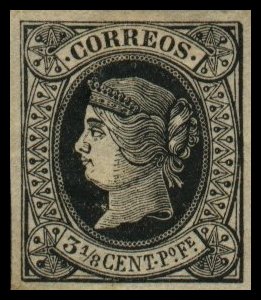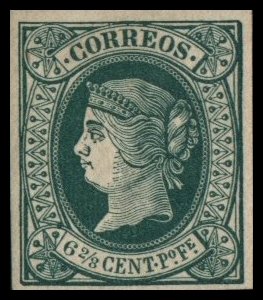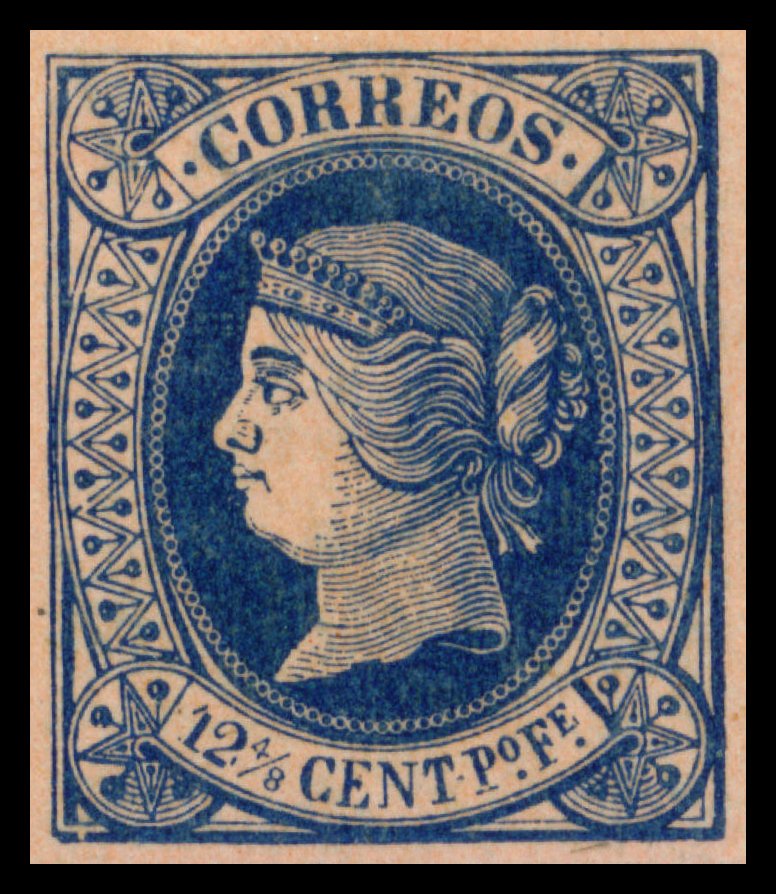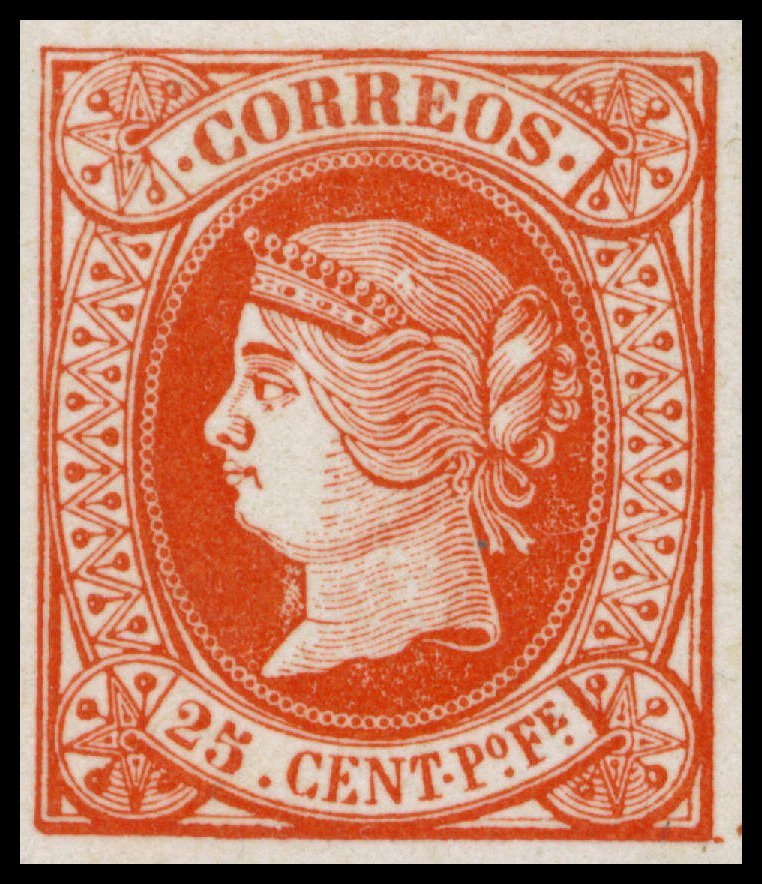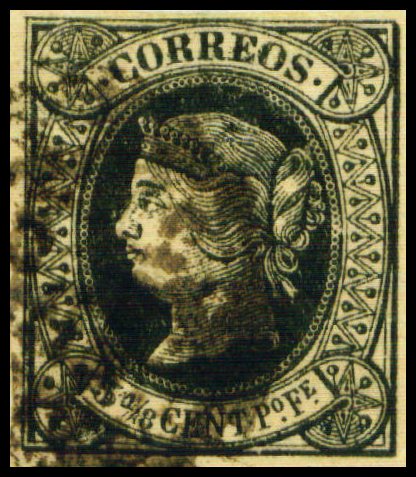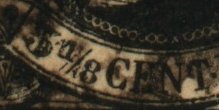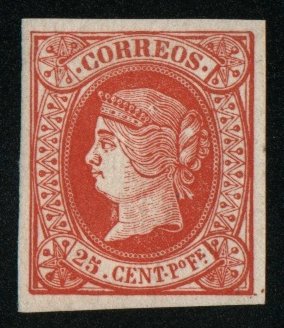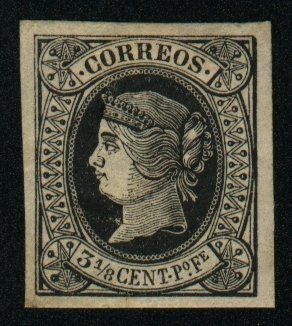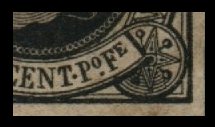Queen Isabella II
![]()
![]()
January 1, 1864
According to an Act dated July 19, 1849 The stamps were typographed on tinted
paper by the Fabrica Nacional de Moneda The design shows the left profile of Queen Isabella II, enclosed
in an oval frame of pearls, and an elaborate diadem in the outer frame. The
word "CORREOS" appears in the top label, with a white dot before
and after it. Four values were issued which correspond to the previous values
of 5-cuartos, 10-cuartos, 1-real and 2-reales respectively. A Royal Order of
December 5, 1864 authorised the use of the 3-1/8 and 6-2/8 centimos values on foreign correspondence whenever their
value permitted, despite being originally intended for "interior"
use. 3-1/8 centimos de
peso fuerte. Issued in varying shades of
black. Exists on buff paper (Scott
#21; SG #26; Edifil #17) and
cream paper (Edifil
#17a). 6-2/8 centimos de
peso fuerte. Issued in varying shades
of green. Exists on white paper (Edifil #18) and
rose paper (Scott #22; SG #27; Edifil #18a). 12-4/8 centimos
de peso fuerte. Issued in varying
shades of blue. Exists on salmon paper (Scott
#23; Edifil #19), white paper (Edifil #19a) and
flesh coloured paper (SG #28). 25 centimos de
peso fuerte. Issued in varying shades
of red. Exists on white paper (Scott
#24; SG #30; Edifil #20) and
rose paper (SG #29; Edifil
#20a). A Royal Order dated November 5, 1864, approved the decision of
the Superintendent at
VARIETIES AND ERRORS Double Impression The 3-1/8c stamp is known to
exist with Double Impression on the value. There are a number of varieties on these issues mainly caused by
worn plates or under-inking on letters and numbers in the value tablet. As a result,
there are various broken letter variations that can be found. In addition,
the following varieties are known to exist on each of the four values: With No Period under
"o" of "
With
No Period under "e" of "Fe"
With
No Period under "o" of "
|
![]()
Comments and Feedback Always Welcome .... Please Email
Return to Home Page
![]()
